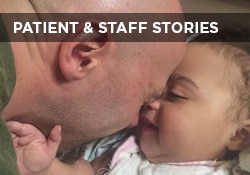This website uses cookies so that we can provide you with the best user experience possible. Cookie information is stored in your browser and performs functions such as recognising you when you return to our website and helping our team to understand which sections of the website you find most interesting and useful.

Susan E. Mazer, Ph.D. Blog
Thoughts and ideas on healthcare
Hi, and welcome to my blog! I'm Susan E. Mazer -- a knowledge expert and thought leader on how the environment of care impacts the patient experience. Topics I write about include safety, satisfaction, hospital noise, nursing, care at the bedside, and much more.
The Patient Experience is Everywhere
January 12, 2018
 Healthcare is again changing and with it, the understanding of the patient experience.
Healthcare is again changing and with it, the understanding of the patient experience.
For example, my insurance will let me go to a CVS Pharmacy or Minute Clinic for things like immunizations and vaccinations. Am I a customer or a patient?
However, it does not feel like I am a “patient” in the most traditional sense.
Being Sick is No Longer A Deviant Behavior
Sociologist Talcott Parson’s theory of the “sick role” clearly defines being “sick” as deviant behavior — one that calls for a specific set of parameters. Things like calling the doctor and not going to a movie.
Today, people may go to a movie when they are sick with a cold, undergoing cancer treatment, or recovering from knee surgery.
Thus, the boundary between being a “person” and being a “patient” is forever blurred.
That also means that how patients experience the healthcare system includes the pharmacy, urgent care clinic, WebMD, and even making an appointment online or by phone. It includes everyone and everything around their health.
Patient Experience Goes Beyond the Hospital
For that reason, reaching beyond the hospital, physician’s office, or urgent care clinic is not only called for but the best way for healthcare providers to fully understand how to be healthy and keep their patients healthy. It’s also part of the patient experience.
Last year was the 25th anniversary of The C.A.R.E. Channel. While it began as a closed-circuit television channel for acute care hospitals, we now offer C.A.R.E. Programming on platforms and formats that support patients throughout the entire continuum of care.
View this interactive infographic to see how.
Responding to where patients are requires reaching beyond wherever they were. They are no longer just in the hospital, but their need for emotional support and stress relief is greater than ever.
P.S. If you like this post, please do me a favor and share on LinkedIn, Twitter, Facebook, etc. Also to get automatic notices when a new post is published, please subscribe. No spam – just great content. Thanks!










